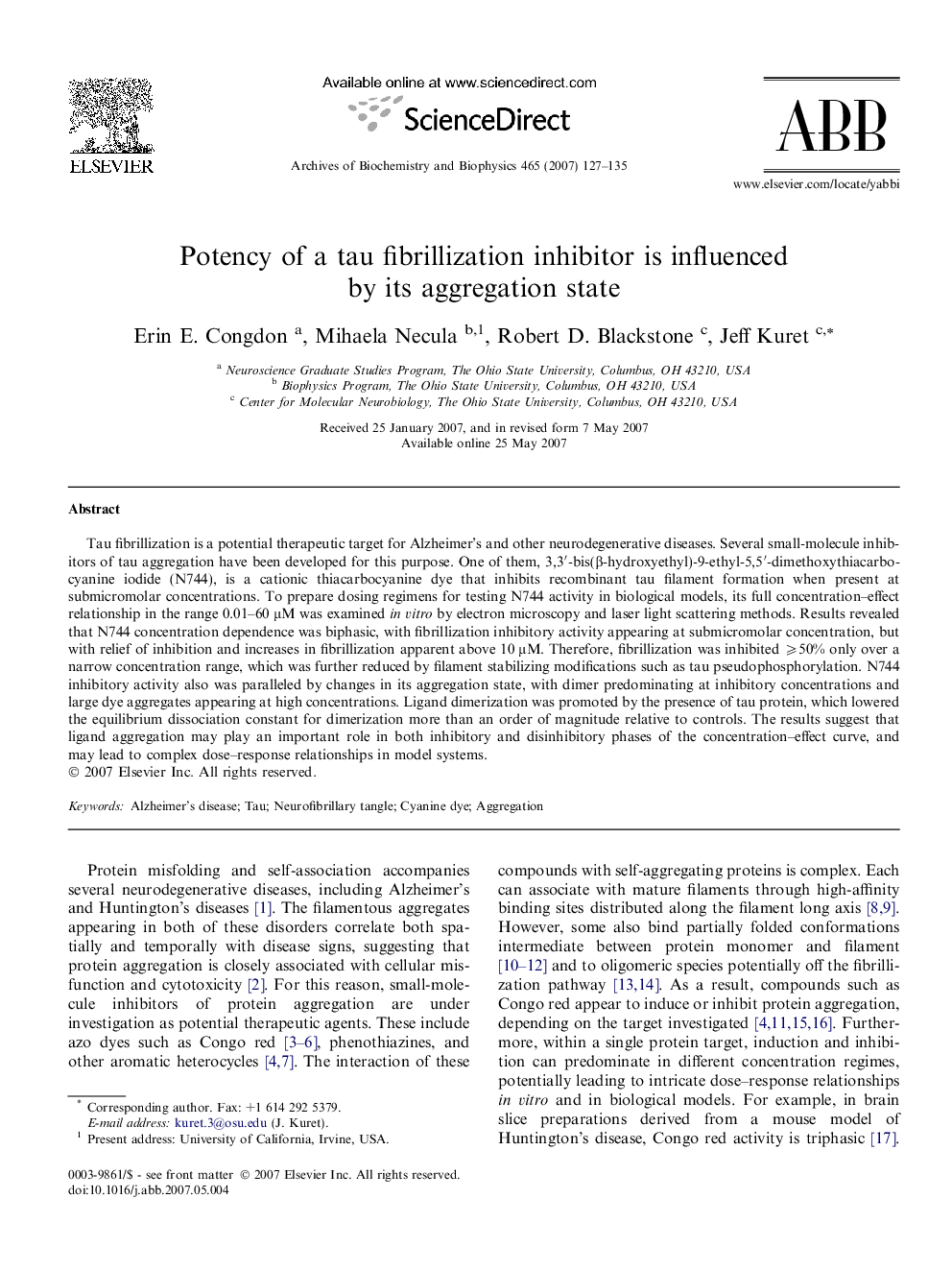| Article ID | Journal | Published Year | Pages | File Type |
|---|---|---|---|---|
| 1927048 | Archives of Biochemistry and Biophysics | 2007 | 9 Pages |
Tau fibrillization is a potential therapeutic target for Alzheimer’s and other neurodegenerative diseases. Several small-molecule inhibitors of tau aggregation have been developed for this purpose. One of them, 3,3′-bis(β-hydroxyethyl)-9-ethyl-5,5′-dimethoxythiacarbocyanine iodide (N744), is a cationic thiacarbocyanine dye that inhibits recombinant tau filament formation when present at submicromolar concentrations. To prepare dosing regimens for testing N744 activity in biological models, its full concentration–effect relationship in the range 0.01–60 μM was examined in vitro by electron microscopy and laser light scattering methods. Results revealed that N744 concentration dependence was biphasic, with fibrillization inhibitory activity appearing at submicromolar concentration, but with relief of inhibition and increases in fibrillization apparent above 10 μM. Therefore, fibrillization was inhibited ⩾50% only over a narrow concentration range, which was further reduced by filament stabilizing modifications such as tau pseudophosphorylation. N744 inhibitory activity also was paralleled by changes in its aggregation state, with dimer predominating at inhibitory concentrations and large dye aggregates appearing at high concentrations. Ligand dimerization was promoted by the presence of tau protein, which lowered the equilibrium dissociation constant for dimerization more than an order of magnitude relative to controls. The results suggest that ligand aggregation may play an important role in both inhibitory and disinhibitory phases of the concentration–effect curve, and may lead to complex dose–response relationships in model systems.
